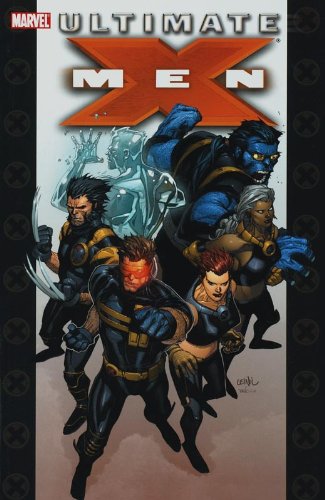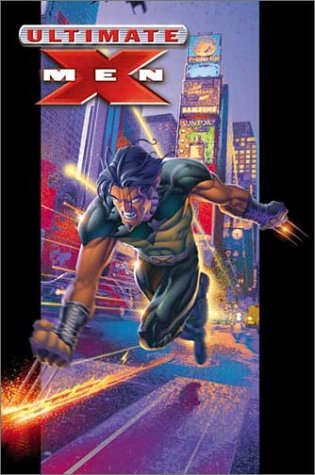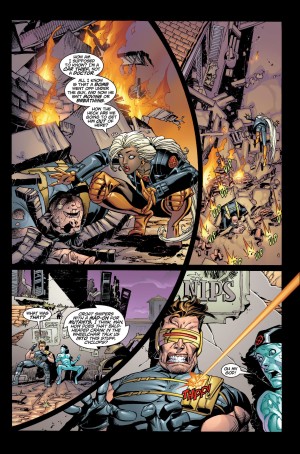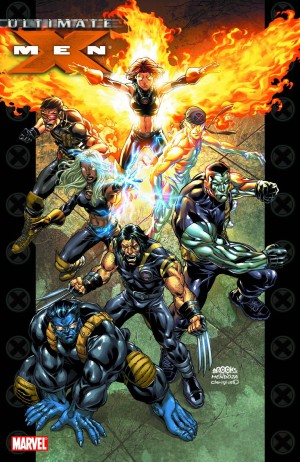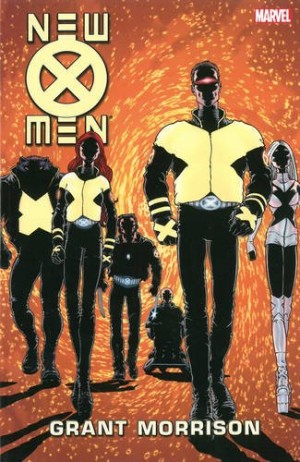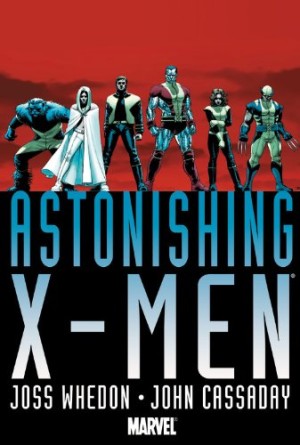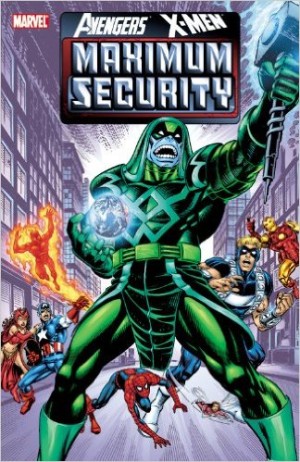Review by Ian Keogh
Ultimate X-Men was a massive success on release, introducing alternate universe versions of the most popular X-Men as they started their superhero careers, freed from the complicated shackles of years of continuity restricting their long-running counterparts.
While there had been stepping stones (in particular The Authority), it was also the series that finally enabled Mark Millar to progress from producing occasionally interesting superhero stories to someone with cinematic vision when it came to superhero action. It’s evident from the introductory chapter, which pulls together the X-Men amid giant robot Sentinels murdering mutants, and Magneto and his allies involved in acts of counter-terrorism.
As Adam Kubert (sample page) is such an accomplished artist it may be assumed that this was exactly the potent and explosive brew he could bring to life like few others. Well, yes and no. The hesitation stems from his style being firmly rooted in the 1990s with awkward storytelling, extraneous hatching, cluttered panels, objectified and painfully thin women, and other angular people. At times, it results in ugly pages. Differences from his brother Andy’s work over a couple of chapters are imperceptible. Tom Raney is more restrained and conventional over a fill-in chapter introducing this Earth’s Nick Fury, not yet modelled after Samuel L. Jackson, while Tom Derenick’s contributions to the final chapter here aren’t a pretty sight either.
Millar experiences problems settling in, particularly over what was previously The Tomorrow People, the introductory graphic novel. There are elements of convenience where the characters serve the plot, and the attraction between Wolverine and Jean Grey, reflecting their mid-1970s relationship, is clumsy and comes across as slightly sleazy despite it being underlined in the dialogue that Jean is nineteen. His dialogue doesn’t always work naturally, but he compensates with a sense of occasion. A fundamental X-Men plot has always been human mistrust of those with inherent super powers, which receives a thorough workout in this collection’s second story, first published as a graphic novel titled Return to Weapon X. It spotlights the government sponsored project where Wolverine was tortured and modified, a facility under the control of a rogue S.H.I.E.L.D. agent who fervently believes in the us against them scenario. John Wraith begins as almost a caricature, but as events continue Millar gives a fair extrapolation of his views along with the differing attitudes of mutants themselves as to their perception. Introducing the Ultimate world’s versions of several other familiar characters, and working towards a surprising and satisfying finale, it’s the better portion of this book.
This material received a rapturous reception when originally published, and glimmers of the reasons for that still filter through, mostly in the Weapon X storyline, but the art now gives it a dated look, as does Millar’s progression as a writer. Much is very good here, but possibly not as good as you remember from the original publication. For those who prefer, the content was also published in hardcover as Ultimate X-Men vol 1.
